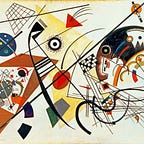Started with a Rainbow
I’ve decided to try a stream of consciousness style for now. I have no agenda and I won’t make large edits. A professor once inspired me to exercise writing as I exercise a muscle: a little every day. Some will be shit, some will be inspiring, but it’s a Vonnegut exercise in creation for oneself only.
There was a time when I was more idealistic. I guess its the age that gets to your imagination. In high school I had a teacher that lamented ever learning about rainbows. She said the mystery was taken away once she learned about the rarefaction that caused the bright colors to suspend in the sky. A more opinionated me scoffed at her ignorance. The antiscience seemed deplorable to me.
She was right in some sense, though, because wonder is taken away when you understand. But I also don’t think that it is the dichotomy of wonder and understanding. I look at rainbows, I understand how they work, and I am still in awe. Understanding the mechanics of the phenomenon only allows me to appreciate it on a deeper level.
I say to myself, “OK, so there’s light. And when that light passes through water it splits the light. But why does it split? And who said that light was not atomic in and of itself?” My point is that one wonder ends up being replaced with another. All answers do is lead to more questions, which lead to more answers, etc. Wonder is important. Wonder leads to inspiration and a pressing of the boundaries of our knowledge. But to let wonder lay as itself is masturbation. To wallow in our wonder like an ecstatic is really just an exercise in self-pleasure. Still, there’s nothing wrong with having a fun time and feeling good, but to purport oneself as better because of it is the raving of a raver.
Wonder allows creativity and investigation. Without the spark of curiosity how could we drive our passions to novae? It isn’t in a vacuum, however. It is an iterative process. There is stimulus and reaction. There is experience and creation. Intake and output. To me all creativity is synthesis of prior experience. I get the sense that the perception is that an artist creates ex nihilo, that they are tapping into something beyond our available experience. But I have begun to see as impossible to create without experience. How can we output something without a motivation? How can you know what to convey without having learned of it yourself? Artists, then, are to me conduits of the human condition and experience.
Recently, I’ve been doing a lot of reading about neural networks. Essentially, it all started in the 60s as an attempt to model the real functioning of neurons. Unfortunately, it didn’t work out as expected, but it did lead to some interesting results. Here we see exactly what I describe above. Wonder about the workings of animal brains led to investigation and answers. Understanding of the neuron led to modeling it with our technology. Finally, it led to more questions about our brains’ processing in general. But I digress.
The salvage from these investigations was a mathematical model for taking various input and finding a way to create the appropriate output. It is elegant in its inelegance. For the most part it is a very brute force method, the idea being that if you cycle data enough times and improve it on every iteration you’ll end up with the right answer. In a way, we really did model how human brains and learning work. We awaken into the world with no prior training. All we have is a machine in our skulls that can adapt to stimulus and repeat patterns. We learn by doing, being checked and corrected, and then doing again until we don’t get corrected anymore.
And this is exactly how I see art and the artist. The collective experience of humans is fed through the brains of artists. They process and produce and present their art to the world who then give it a ‘yea’ or ‘nay’ accordingly. Sometimes the model gets it right on the first try. Other times it takes 1,000 runs. The best artists keep trying. They put more effort into it, try different techniques, use the same technique with different ideas. The point is that they take their experience and convert it into new experience that is fed back into the collective experience.
Wonder leads to creation and investigation. It is a cycle that perpetuates the experience.
